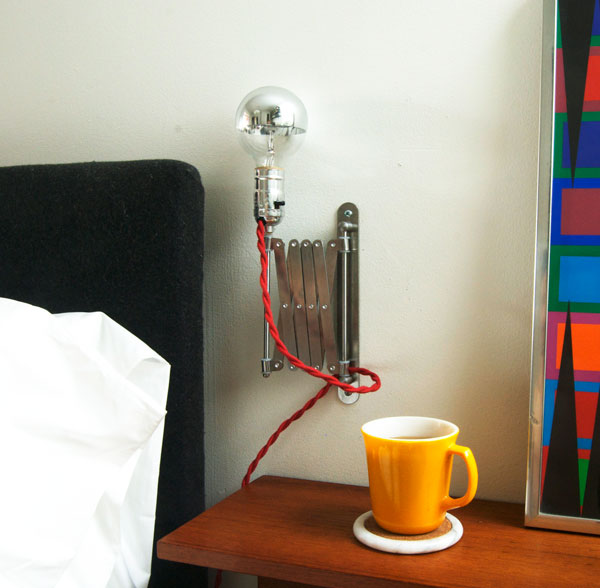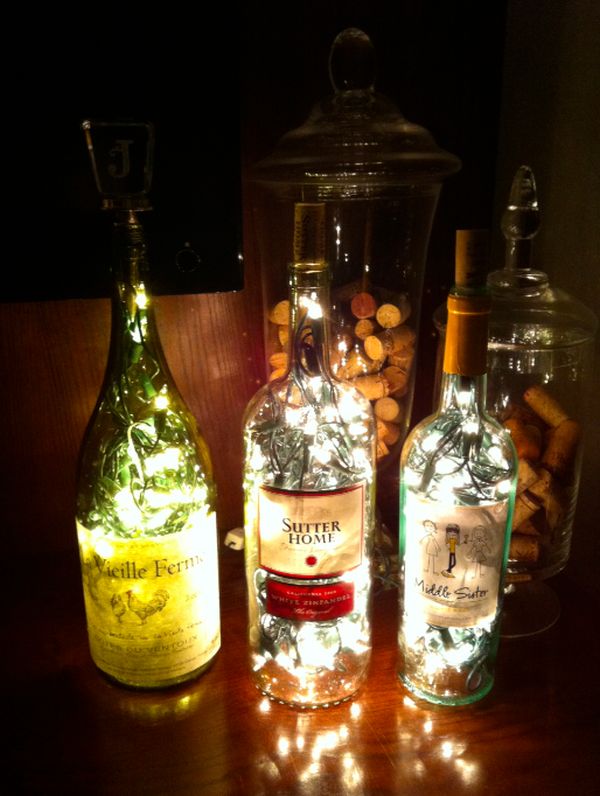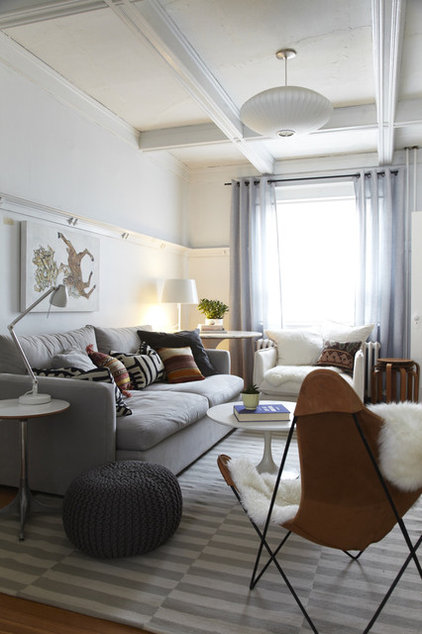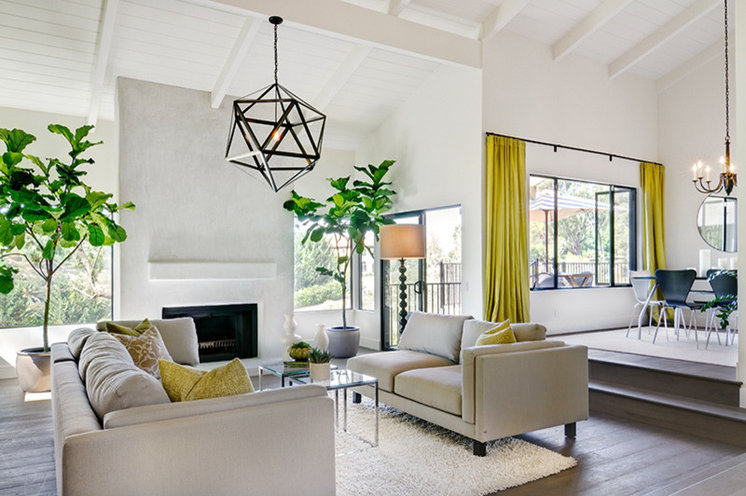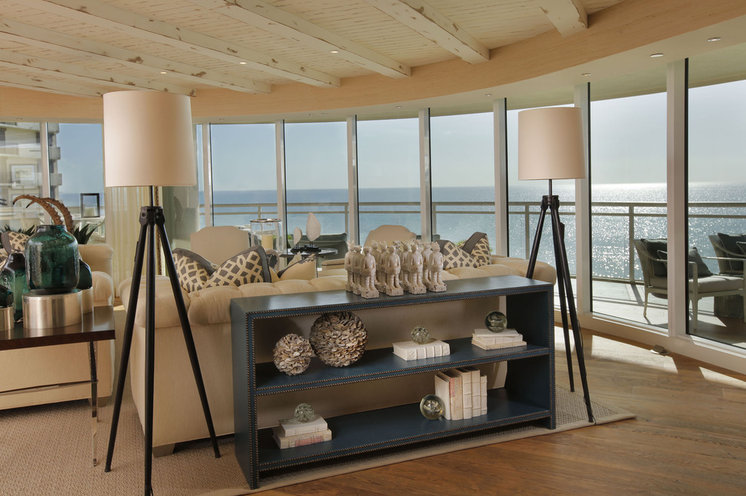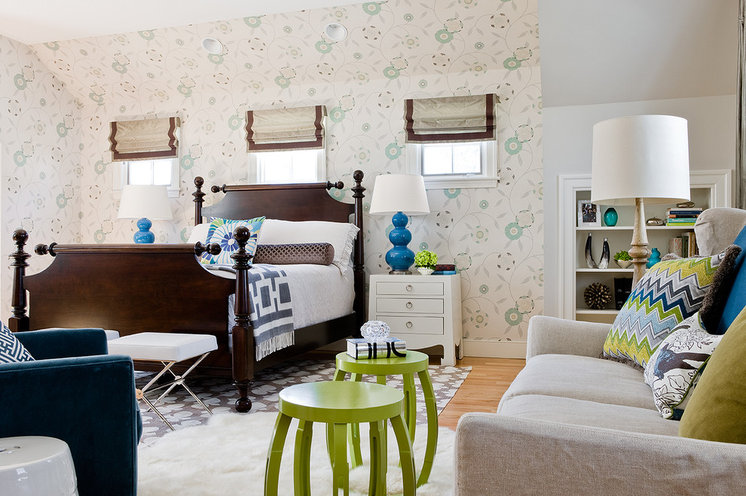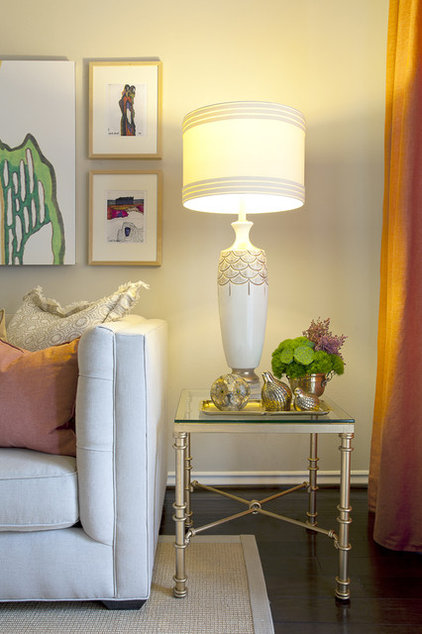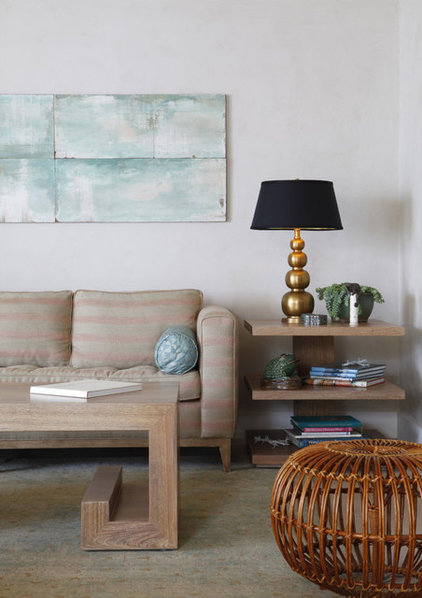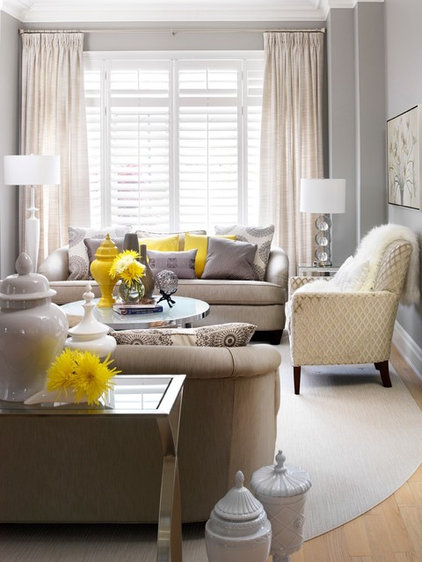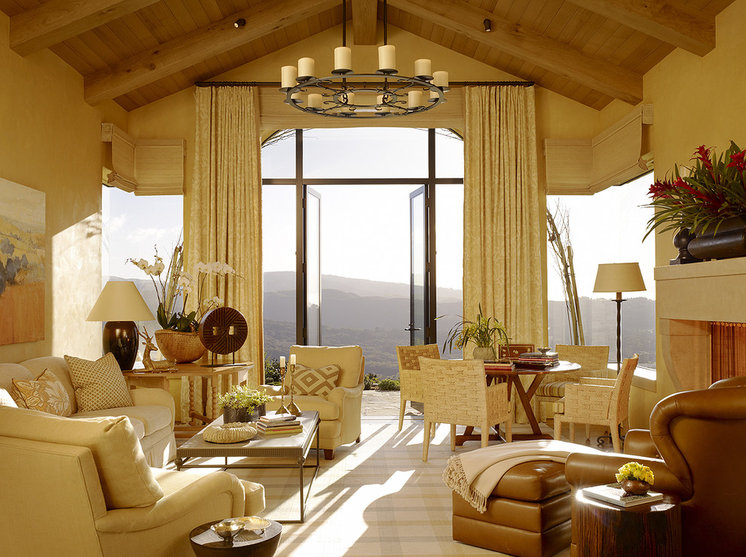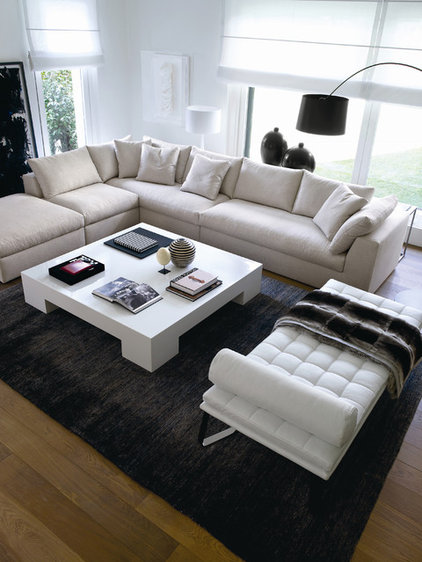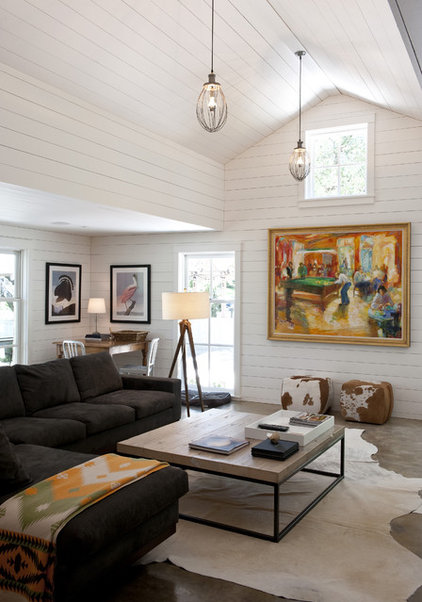
Shallow drum shades give floor lamps contemporary style.
The type of shade you choose for a floor lamp can have a big impact on the style, appearance and amount of light the lamp puts out. A new shade can transform a traditional style floor lamp into a contemporary light fixture, or vice versa. Also consider how you'll use the lamp when looking for shade.
Shade and Base Shape
Typically, the shape of the lampshade should match the shape of the base. If the base has curved contours or a rounded shape, choose a curved or round lampshade. A shade with straight sides or slightly angled sides complements a base with straight sides. A floor lamp with a square or rectangular base works best with a square lampshade. A cone-shaped shade can lighten the look of a bottom-heavy lamp. However, these shape tips can be disregarded if you desire a different aesthetic.
Getting a Good Fit
A proper fit is important for the look and the safety of the shade. Floor lampshades need a minimum of 3.5 inches between the widest part of the bulb and the shade if using anything but compact fluorescent bulbs. The shade should sit just above the top of the bulb and extend below the lamp works, which includes the harp saddle and socket. If the shade is sitting too high on the lamp, exposing the hardware, a shorter harp may solve the problem. The taller the harp, the higher the shade sits on the lamp.
Shade Types
Floor lamp shades are available in two types, hardback and silk. Silk lampshades are constructed on wire forms, whereas hardback shades consist of laminated fabric or paper over molded plastic. Hardback shades can be opaque or translucent; silk shades are always translucent. Any style of hardback shade can also be found as a silk shade. Although hardback shades are typically less expensive, the wire frames of silk shades offer more detail and variety, such as scallops, curves and bell shapes. Your budget, style preference and lighting needs will determine which type of shade you should choose.
Shade Styles
The shape and style of a floor lampshade should complement the surrounding the decor. Drum style shades are favored in modern settings and were very popular in the 1950s and 60s, making them a common choice for Mid-Century Modern-style decorating. Shades with pleats lend a casual feel while scalloped edges add a homey sense of comfort. Empire shades, with their wide bottoms, sloping sides and narrow tops have a standard appearance that works well in practically any decorating style. Coolie style shades have very narrow tops and create a contemporary look on most any base. Popular in the Victorian era, fluted bell shades impart a refined, traditional feel. Shades with colorful prints make the lamp stand out as an accent piece. Match the color of walls or furniture for a lamp that blends in.
Lighting Needs
In addition to the aesthetic of a floor lamp, consider your lighting needs when deciding on what type of shade to buy. Opaque shades that direct light up and down and those with wide bottoms help focus the light where you need it when performing tasks such as reading, sewing or other seated activities. White and other light colors such as beige allow the most diffused light to shine through the shade, making them ideal for general lighting. Neutral-colored shades offer the most flexibility for those prone to redecorating often. If your floor lamp is strictly an accent light, you can venture into darker colors such as red or burgundy for more of a sultry atmosphere.
Article Source: http://homeguides.sfgate.com/interior-decor-tip-choose-floor-lampshade-105393.html
Buy industrial style lighting online in Australia with fast delivery and great prices. Industrial Lamps, Pendants, Floor Lamps, Desk Lamps, Chandeliers.




